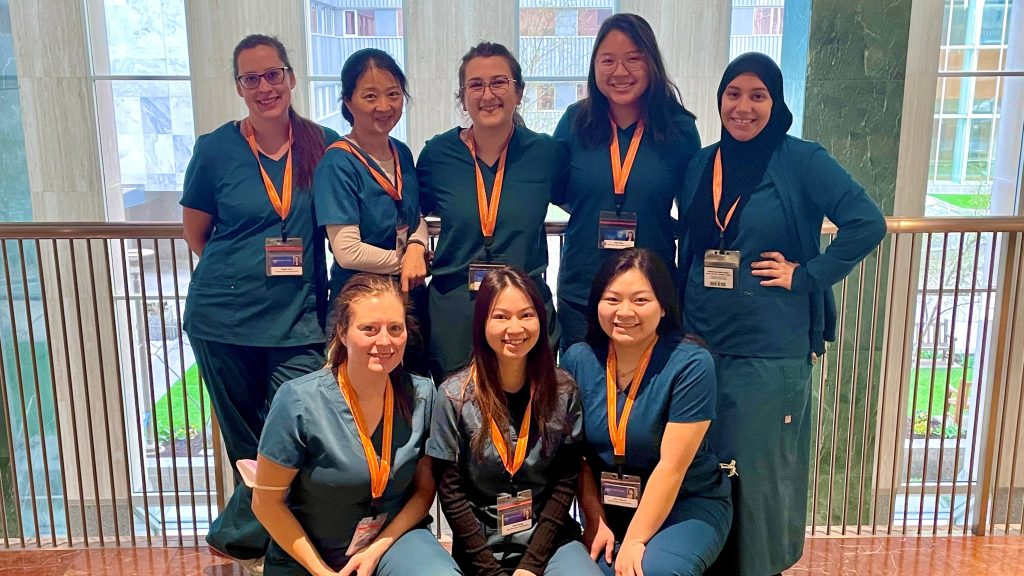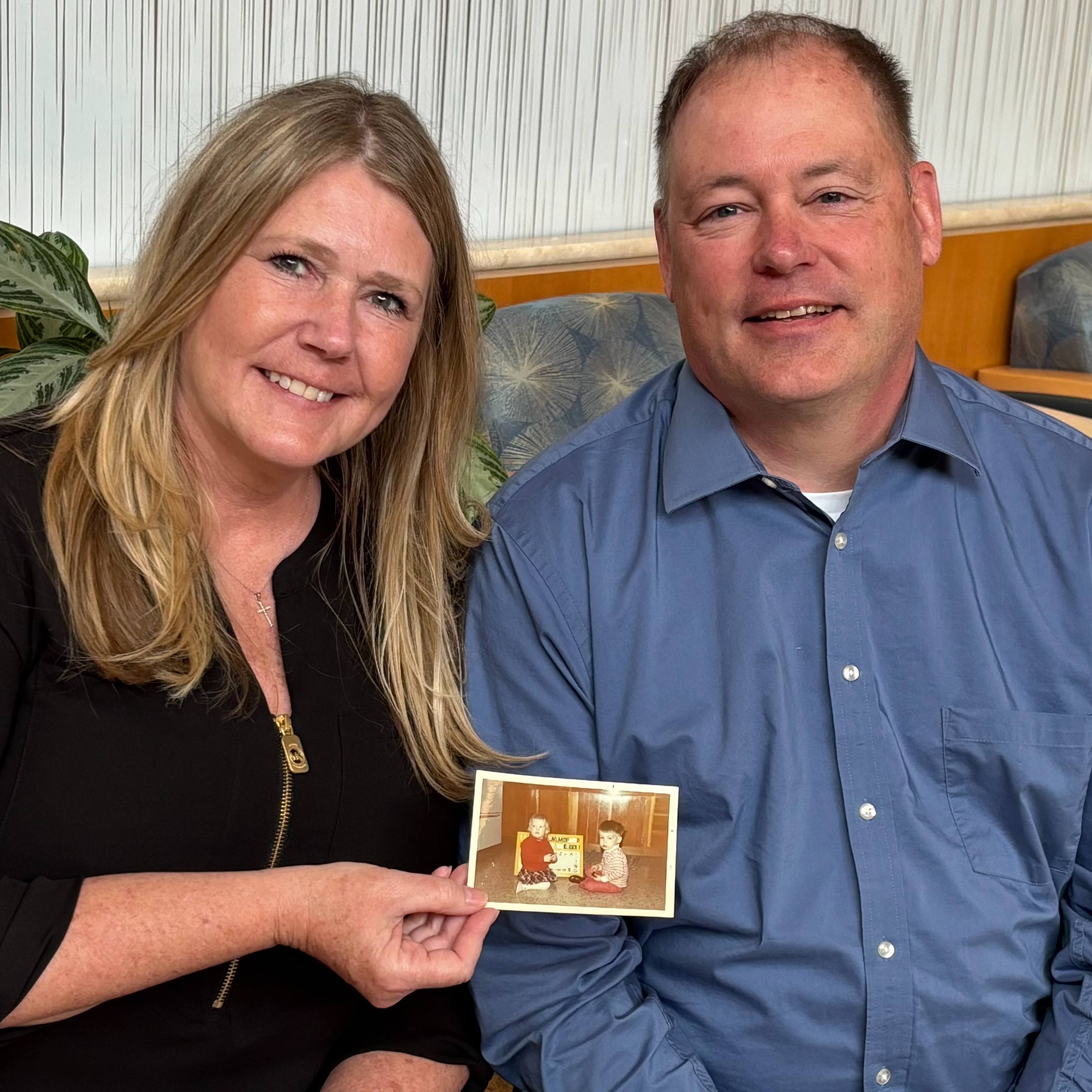-
Mayo’s new MRI Program graduates prepare to fill growing demand for techs

Call it a formality, call it inevitable — and now call it a success. With a nationwide surge in demand — including at Mayo Clinic — for MRI technologists, the time was right to create a program that streamlined the process for students with an interest in the field.
Building from concept in 2018 to a program in 2021 required patience. And one year in, the Department of Radiology has been rewarded as the Mayo Clinic School of Health Sciences MRI Program's first class of eight students recently graduated.
Nicole L. Fischer, a program manager for Radiology Education and Staff Development, was part of the team who proposed the creation of such a program in the Mayo Clinic School of Health Sciences in Rochester after the American Registry of Radiologic Technologists (ARRT) created accreditation criteria for MRI programs. This opened the way for MRI programs to teach and train individuals in MRI in 12 months.
"We were looking at staffing shortages and trying to determine where we could recruit candidates," Fischer says. "And there were no other accredited MRI programs across the state, and the number nationally is quite low. So if there isn't one, let’s build it and see if it works."
Reason to celebrate
Daisy Lin, a vascular access technician and member of the inaugural MRI program cohort, says the first day of school was special.
"I was so excited. I felt grateful," she says, adding that it reminded her of International Children’s Day, which is June 1, in China, where children received gift bags in celebration of the holiday. "In China, they still celebrate International Children's Day — it's a holiday."
Students were given packs with laptops, snacks and other items on the first day. "I just feel taken care of by my teachers," Lin says. "They supplied everything I needed to begin the program. I felt like a kid again."
At the end of its first year, the program graduated eight students: Tham Duong, Nourhan Halawa, Amela Hamzagic, Daisy Lin, Quyen T. Nguyen, Mia Otzen Rossi, Ashlie Perzynski, and Angela Tichy.
"It's exciting to see the program bear fruit," Fischer says. "We're glad the students took a chance on this new program and look forward to welcoming a new group for the second year."
Timing is everything
Tham Duong, a patient care assistant at Mayo Clinic Hospital — Rochester, Saint Marys Campus, and a member of the Class of 2022, says the MRI Program’s arrival was serendipitous.
"I had a patient who needed to go to MRI for his scan and I went with him. I got a chance to see all the science of the scanners and meet the technologists, see their workflows, and it was really interesting," Duong says. "And then I went home, did some research about MRI, and the year that I decided to apply was the first year that the MRI program was open, so it was really fortunate."
Lin was taking classes at Rochester Community and Technical College and unsure what her focus would be. She had started to lean toward radiography when the MRI program was announced.
"I have a lot of friends who work in the MRI field. For me, it was the right thing at the right time," she says, adding that she was drawn to the shorter pathway to completing the education and beginning her career.
The MRI program is based in the Siebens Building, and students get hands-on experience during MRI scanning sessions in the Opus Building, which primarily is a research hub for the Department of Radiology. For clinical work, students go to the Charlton North, Charlton and Gonda buildings, where they work in inpatient and outpatient areas.
"Each student was assigned a preceptor in our clinical experiences, so they work together one-on-one. Every time we are at a scanner there will be a preceptor there to supervise us," Duong says. "There’s always a preceptor there. We would never scan a patient alone."
2 ways toward same goal
Before the Mayo Clinic School of Health Sciences MRI Program, an individual who wanted to work in MRI was required to go through the Radiography Program, be hired into an MRI unit and complete the ARRT postprimary pathway. This process requires additional structured education and on-the-job training that may take up to eight months. The new program allows individuals to complete a streamlined process into the MRI profession by earning an associate degree or higher and completing an ARRT-approved educational program.
Whichever pathway is completed, graduates must still pass the ARRT MRI certification exam.
The big difference between the Radiography and MRI programs is the former opens doors to training and certification in CT, mammography, MRI and other specialties, while the MRI Program is just MRI, says Jacqueline (Jacque) Burnes, MRI program coordinator and a Radiography Program graduate who focused on MRI.
"Fortunately, there are a lot of opportunities to expand within MRI. Technologists can do research, work with high-field-strength MRI, PET/MRI, neonatal scanning, education and more," she says.
"At the end of the program, graduates are entry-level technologists who need a little bit of onboarding and are ready to sit for boards," says Jennifer J. Myers, MRI clinical coordinator.
Hands-on experience a bonus
Burnes says the program's integration with Mayo Clinic is an added selling point for prospective students. "We offer unparalleled clinical experience with opportunities to perform a high volume of exams and work on high-end, advanced equipment," she adds. "Students wouldn't be able to see this anywhere else outside of Mayo Clinic."
Students also collaborate with radiologists and physicists. "Our students are able to learn about physics from the physicists who are working in MRI along with technologists and performing MRI research," Burnes says. "It is a unique experience to be able to learn about scanning a patient with an implanted device and then go out to the clinic and sit down next to the physicist who was giving the lecture for hands-on experience."
"I put a lot of time into the classroom, into studying. For students who speak English as a second language, you still have some barriers where it takes a longer time to get everything into your brain," Lin says.
The program pairs classroom instruction with 96 hours of laboratory work and 900 hours of clinical work. "Students are really able to apply what they are learning in class and lab with their instructors into clinical practice," Burnes says.
"From my first day in clinical, I didn't know anything — it was a lot to take in. I would come home with a headache," Duong says with a laugh. "But now I feel very confident with scanning with patients, with everything. The techs are really helpful, and the nine months of clinical went by really fast. I learned a lot."







